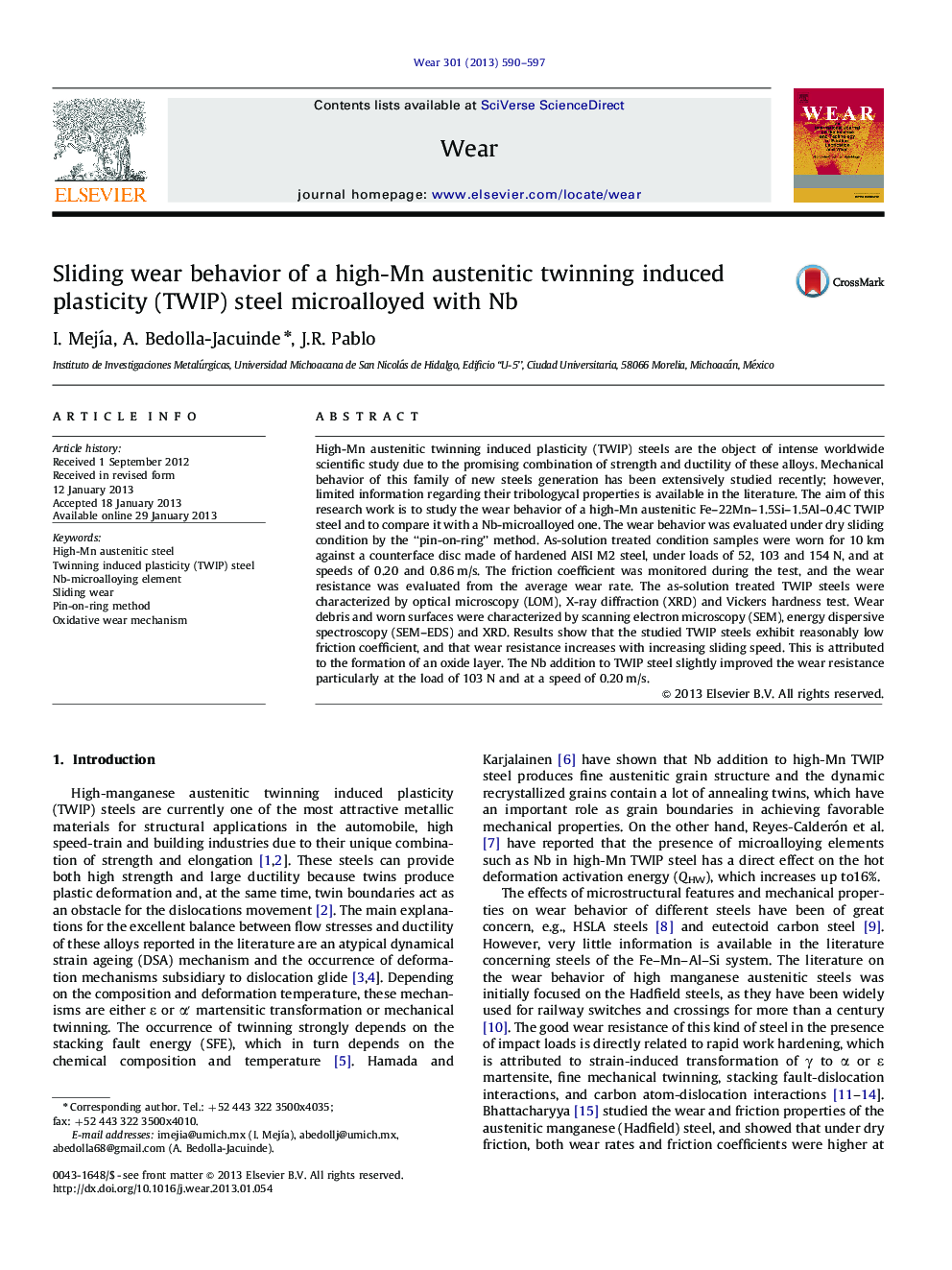| Article ID | Journal | Published Year | Pages | File Type |
|---|---|---|---|---|
| 617569 | Wear | 2013 | 8 Pages |
Abstract
High-Mn austenitic twinning induced plasticity (TWIP) steels are the object of intense worldwide scientific study due to the promising combination of strength and ductility of these alloys. Mechanical behavior of this family of new steels generation has been extensively studied recently; however, limited information regarding their tribologycal properties is available in the literature. The aim of this research work is to study the wear behavior of a high-Mn austenitic Fe-22Mn-1.5Si-1.5Al-0.4C TWIP steel and to compare it with a Nb-microalloyed one. The wear behavior was evaluated under dry sliding condition by the “pin-on-ring” method. As-solution treated condition samples were worn for 10Â km against a counterface disc made of hardened AISI M2 steel, under loads of 52, 103 and 154Â N, and at speeds of 0.20 and 0.86Â m/s. The friction coefficient was monitored during the test, and the wear resistance was evaluated from the average wear rate. The as-solution treated TWIP steels were characterized by optical microscopy (LOM), X-ray diffraction (XRD) and Vickers hardness test. Wear debris and worn surfaces were characterized by scanning electron microscopy (SEM), energy dispersive spectroscopy (SEM-EDS) and XRD. Results show that the studied TWIP steels exhibit reasonably low friction coefficient, and that wear resistance increases with increasing sliding speed. This is attributed to the formation of an oxide layer. The Nb addition to TWIP steel slightly improved the wear resistance particularly at the load of 103Â N and at a speed of 0.20Â m/s.
Related Topics
Physical Sciences and Engineering
Chemical Engineering
Colloid and Surface Chemistry
Authors
I. MejÃa, A. Bedolla-Jacuinde, J.R. Pablo,
